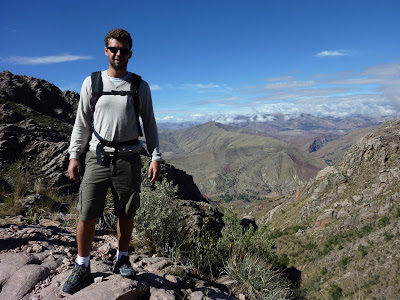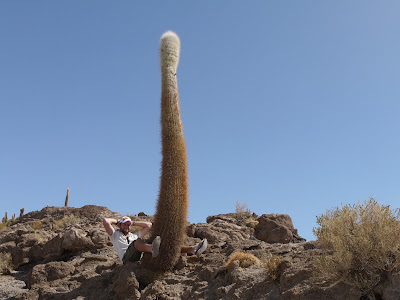As my last post packed in quite a bit I didn't manage to write as much as I wanted about the Pantanal, where I have been staying for the past five nights and from whence I leave today to go further south to a small town, Bonito, famed for its crystal-blue rivers packed with tropical fish and underwater caves. I will spend two nights there before heading to Bolivia and Peru - a change of plan from originally heading south into Patagonia, Argentina.
 |
| Morning boat trip on the Rio Negro |
 |
| Cayman |
The majority of the Pantanal is located in Brazil, in the states of Mato Grosso and Mato Grosso do Sul. A minority area of the wetlands crosses the border into Bolivia and Paraguay, and altogether the area is twenty times the area of the Everglades in Florida. Most of the Pantanal is privately owned, split between massive ranches each with 1,000s of hectares of land upon which their cattle herds graze. As mentioned in my previous post, on the 28th I rose early to travel by horse with Mancha (not Mancho as originally thought - Mancha means 'stain' as he has a birth mark on his throat) to the neighbouring ranch for the eagerly anticipated seventh annual 'Festa do Cavalo Pantanal' (Pantanal horse party). The ride over followed a path through thick jungle, with the horses nervous of the animal rustles within, fully-aware that they are not top of the food chain, despite the security of Mancha's pistol strapped to his hip in its leather holster.
 |
| Horse ride through the jungle |
Essentially the event was a sports day for cowboys, testing a variety of skills that cowboys use in their daily routines of rounding up cattle and maintaining the ranch. Both a sporting and social event, everyone from the surrounding ranches attends, cowboys, wives and would-be wives and children, arriving on horse, tractor and trailer or both. The day was divided in two styles of events, with the midday interval providing a Churrasco (barbecue). A cow is 'sacrificed' for the event and cooked on long wooden stakes balanced over an open-pit fire. Meat here is cooked very well-done, so that it is dry and juiceless but still tasty. Guitarists and an accordion provided the traditional musical entertainment during the day, sitting almost cliche-like on three wooden stumps by the tractors.
 |
| 7th Horse Festival |
In the morning, the event was a time-trial assault course. First having to saddle the horse, the cowboy then galloped along a hundred metre stretch taking out his machete knife (all cowboys carry a leather holster at hip level on their back with two knifes, a smaller and larger one) to cut down three palm branches at twenty metre intervals. This seemed a pretty simple affair but surprisingly several cowboys missed them, and sometimes all three. They then had to slalom their horse through a set of narrow poles at the end of which hung a horn that was to be blown. Often cacophonous and hardly distinguishable from the rear-end of the horse. They then dismounted and chugged a large cup of Terere, the traditional tea that cowboys drink throughout the day through a metal straw. Then back on the horse and through a gate that had to be opened and closed without dismounting, and finally over a small jump the height of two levels of sandbags that would be laughable in European riding circles, but still made the horses nervous (horses are for work and are not used to jumping), and across the finish line. The second half of the day after lunch and some well needed napping in the hammock were one-on-one tournament races that included a sprint and turn around a barrel and then a series of weaving slalom before a sprint back to the finish line. This was the day's main event, and supposedly the cowboys practice all year in the hope that they are crowned champion. This provided some interesting watching, including seeing some downhearted cowboys beaten by women riders - the cowboy society is very macho, and would avoid losing to women at all costs! The last event before prize-giving was an amusing musical chairs, which, as you can imagine, is not that easy when you're on a horse and have to jump down to sit on the wooden stool with horse by your side.
 |
| The only Gringo in the village |
 |
| Cowboy race |
 |
| Mancha turning round a barrel |
My other days were spent on the river kayaking or fishing for Piranha and Dorado, or on horse roaming the lagoons and jungles, managing a few gallops with cowboy Mancha on the plains. I managed to see a lot of wildlife including Caymans, Giant Otters, Capybara, Toucans (very cool with their long colourful beaks), Parrots, Foxes and several extremely strange looking mammals including a Giant Anteater.
 |
| Kingfisher |
 |
| Piranha |
 |
| Owl |
 |
| Giant Otter |
This morning I got up early at 5am to milk the cows in time to have it as yoghurt with my cereal and as milk with my coffee. Pretty cool experience, similar to squeezing a stress ball.
Now I'm off on my seven hour 4WD car ride through the Pantanal to get to Bonito.
Until next time,
BTW...












































